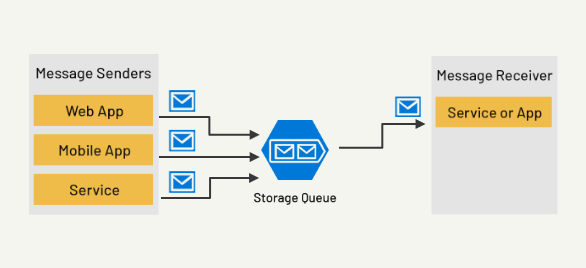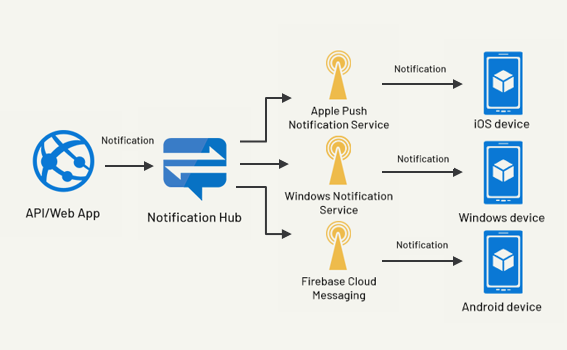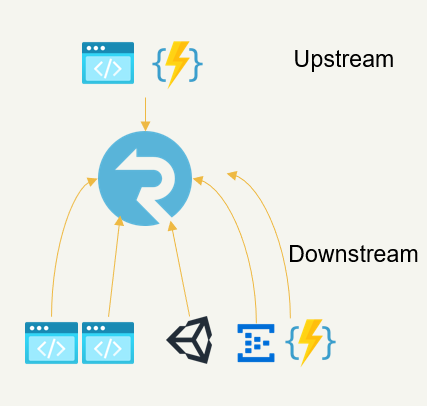Azure Messaging Services Why, When, and How?

Introduction
Welcome to my blog post on Azure Messaging Services! In this article, I’ll delve into the intricacies of various messaging solutions offered by Azure, exploring why and when you should use them, and how to make the most out of each service.
Why Messaging?
Firstly, it’s essential to address why we need these messaging services. At a basic level, you might not actually need them. If you’re building a small application with a single client, API, and database, messaging might not be necessary. However, messaging becomes invaluable when you have distributed applications, such as microservices or serverless applications, that need to communicate seamlessly. While REST APIs are excellent for retrieving data and sending requests, messaging is the solution for non-blocking, loosely-coupled communication between applications or services.
Understanding Messaging Terminology
Before we delve into specific services, let’s familiarize ourselves with some key messaging terms:
- Message: Essentially an instruction or command sent from one system to another.
- Event: Similar to a message but more about broadcasting that something happened, rather than expecting an action.
- Producer: The sender of messages or events.
- Consumer: The receiver of messages or events.
- Broker: The intermediary service responsible for handling and routing messages or events.
- Event-driven Architecture: A design approach focused on building distributed applications that communicate via events or messages.
Azure Storage Queue

Why Use It?
- Basic messaging solution in Azure.
- Integrates seamlessly with Azure Storage concepts.
- Suitable for scenarios where reliability and scalability are essential.
When Not to Use It?
- Large message sizes (>64 KB).
- Long retention requirements.
- Multiple consumers for the same message.
How to Use It?
- Supported by various SDKs.
- Accessible via standard HTTP with SAS Token/Shared Key.
Azure Service Bus

Why Use It?
- Offers high reliability and scalability.
- Supports standard AMQP 1.0 protocol.
- Provides advanced features for enterprise messaging scenarios.
When Not to Use It?
- Not suitable for polling or broadcasting.
- Avoid unnecessary costs for high reliability.
- Testing locally might be challenging.
How to Use It?
- Utilize SDKs like .NET, Java, Python, etc.
- Alternatively, interact via AMQP for low-level consumption.
Azure Event Hub

Why Use It?
- Ideal for stream and batch processing.
- Enables real-time data analytics.
- Managed Kafka with minimal overhead.
When Not to Use It?
- Not required for batch/stream processing.
- Testing and debugging locally might be cumbersome.
- Consider cost implications.
How to Use It?
- Supported by various SDKs and Azure Functions Trigger.
- Integrates seamlessly with Azure native services like Event Grid and Stream Analytics.
Azure Event Grid

Why Use It?
- Seamless integration with Azure services.
- Fully managed, serverless infrastructure.
- Highly scalable event broker supporting multiple sources and subscriptions.
When Not to Use It?
- Unsuitable for stream/batch processing (use Event Hub instead).
- Challenges in hybrid or multi-cloud environments.
- Testing and debugging can be tricky.
How to Use It?
- Utilize SDKs such as .NET, Java, Python, etc.
- Leverage Azure Functions Trigger for event-driven scenarios.
Azure Notification Hub

Why Use It?
- Efficient for sending push notifications to mobile apps.
- Simplifies automation of push messages.
- Easy-to-use push engine for cross-platform notifications.
When Not to Use It?
- Only targeting Android (consider Firebase instead).
- Not designed for real-time messaging.
- Limited capabilities for communication back to the backend.
How to Use It?
- Server-side integration using .NET, Java, or HTTP client.
- Client-side support for Xamarin, React Native, etc.
Azure SignalR Service

Why Use It?
- Enables near real-time messaging between publishers and subscribers.
- Managed SignalR infrastructure for web applications with real-time features.
When Not to Use It?
- No need for near real-time messaging.
- Challenges with multi-region deployments.
- Consider cost implications compared to self-hosting SignalR.
How to Use It?
- Utilize SDKs like .NET, Java, JavaScript.
- Supports WebSockets and MessagePack clients.
Choosing the Right Service
When selecting a messaging service, consider your specific requirements:
- Storage Queue: For simple queues.
- Event Grid: For multi-source, multi-consumer events.
- Service Bus: For advanced queues with multiple consumers.
- Notification Hub: For push notifications to mobile apps.
- Event Hub: For high-volume stream and batch events.
- SignalR Service: For real-time pub/sub scenarios.
Conclusion
In conclusion, Azure offers a wide array of messaging services tailored to various use cases. By understanding the strengths and limitations of each service, you can effectively leverage them to enhance your applications’ communication capabilities.
Further Exploration
References:
- Storage Queue: Get started with Azure Storage Queue using .NET
- Service Bus: Get started with Azure Service Bus using .NET
- Event Hub: Send and receive messages with Azure Event Hub using .NET
- Event Grid: Send an event grid event using Azure Function trigger
- SignalR Service: Quickstart: Learn how to use Azure SignalR Service
- Notification Hub: Send push notifications to Android devices using Firebase SDK
If you have any questions or wish to explore specific topics further, feel free to reach out to me:
- Bryan Anthony Garcia
- @mindofai
- bryananthonygarcia@live.com
Thank you for reading!